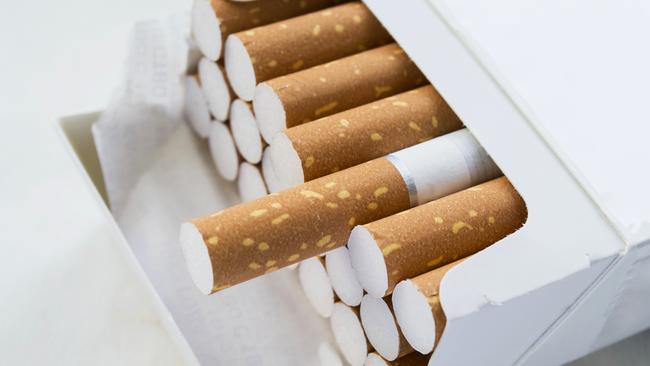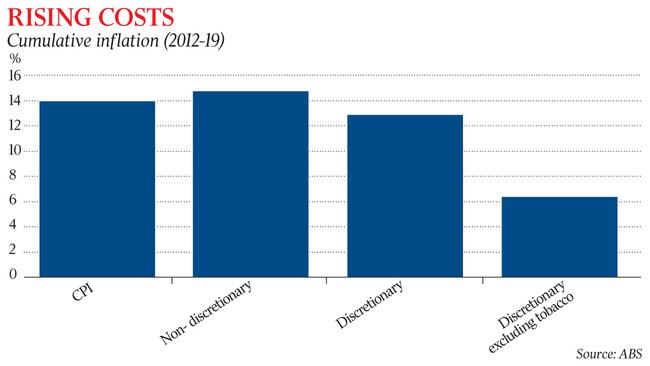Inflation hitting the poor hardest
The prices of goods and services that can’t be avoided have risen more than twice as fast as discretionary items.

The prices of goods and services that can’t be avoided — including rent, utilities and basic food — have risen more than twice as fast as discretionary items, according to research that suggests low-income households, and especially smokers, have borne the brunt of cost-of-living increases.
Over the seven years to 2019 the cost of discretionary goods and services rose 6.4 per cent, the ABS found, while non-discretionary items, including health and childcare, and financial services, rose almost 15 per cent. Robert Breunig, a professor of economics at ANU, said discretionary items, such as holidays and restaurant meals, tended to increase more slowly in price because, by definition, people could do without them.
“Whereas you see that health, childcare and education, classified by the ABS as non-discretionary, all have a very high labour component, which means they aren’t getting the gains from automation that result in lower prices,” he said.
Cost of living was the No 1 concern among voters aged 18 to 54, ahead of COVID-19, according to a JWS Research “True Issues” report from July.
“Making up the bulk of the Australian workforce in a time of great economic uncertainty, Millennials (aged 18-34 years) and Generation X (35-54 years) are most concerned about cost of living (55 and 64 per cent, respectively), ahead of hospitals, healthcare and ageing,” the report said.
Professor Breunig’s own research from April found the lowest income households had experienced the largest inflation and those at the top had experienced the least inflation between 2011 and 2018. The differences in inflation experience were completely driven by alcohol and tobacco, which make up a much larger share of poorer households’ budgets, it found.

“It’s not that they are physically drinking and smoking more — higher income households spend more in absolute terms — but it’s proportionately a bigger share,” he said.
Annual increases in tobacco excise, which raises about $15bn a year for the federal government, have seen prices double since 2011. Tobacco and alcohol together make up 8 per cent of the consumer price index, more than education, clothing and footwear combined.
“There are no international standards or definitions for non-discretionary and discretionary household spending,” said the ABS researchers, who classified clothing and footwear as “discretionary” and all insurance and financial services expenditure as “non-discretionary”.




To join the conversation, please log in. Don't have an account? Register
Join the conversation, you are commenting as Logout